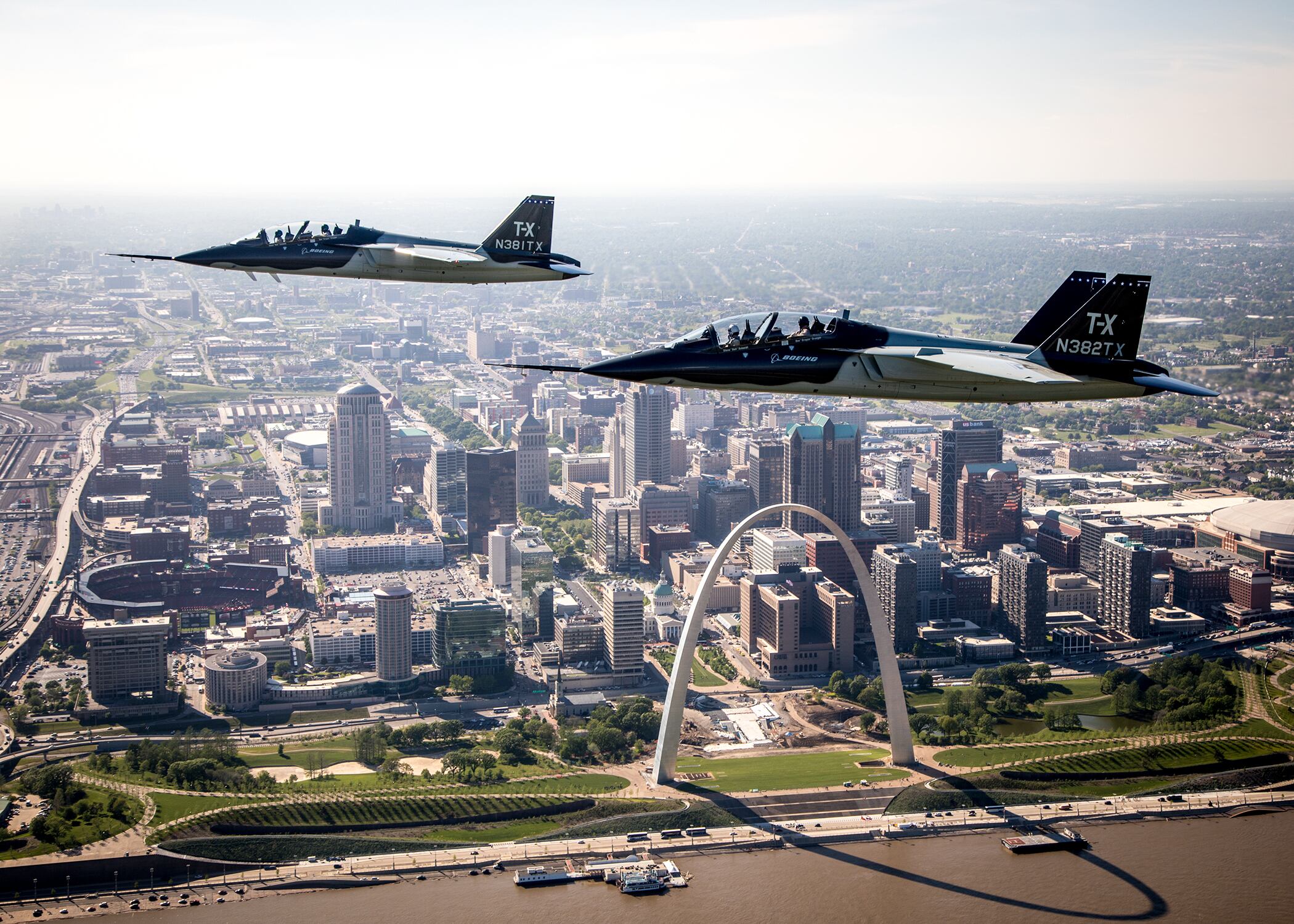NATIONAL HARBOR, Md. — The U.S. Navy and Marine Corps are monitoring the development of the Air Force’s T-X training jet, but it may be years before they can launch their own competitions to replace the T-45, officials said Monday.
“We’re watching the T-X. Obviously the Air Force is going through that process,” Lt. Gen. Steven Rudder, the Marine Corps’ deputy commandant for aviation, said during a panel at the Navy League’s Sea-Air-Space conference.
RELATED

“At some point, we’re going to have to replace the T-45. We’re going to have to replace the F-5,” he said, referring to the T-45 Goshawk (used by the Navy and Marine Corps to train fighter pilots) and the F-5 (used to simulate adversaries during exercises).
“Our adversary requirement is not going away. It only increases. That’s another one that with our Air Force counterparts we’re watching closely on many different fronts,” he added.
Click here for more stories, videos and interviews from Sea-Air-Space!
Last year, the Air Force chose a Boeing-Saab team to build a new, clean-sheet trainer, awarding the firms a contract worth up to $9.2 billion. Although the service’s program of record is 351 T-X jets and 46 simulators, the agreement gives it the flexibility to buy up to 475 aircraft and 120 simulators. A Navy and Marine Corps buy would add several hundred aircraft to the Air Force’s eventual order — a massive financial win for Boeing, which bid extremely low on the T-X solicitation with the expectation of raking in big profits during the production stage.
Boeing is set to deliver the first simulators to Joint Base San Antonio-Randolph, Texas, in 2023. In fiscal 2024, the Air Force will have enough simulators and trainers to declare its first squadron as operational.
Angie Knappenberger, the Navy’s deputy director of air warfare, said the timing of a T-X buy could be “problematic” because of the current schedule of the TH-57 replacement, which is taking priority over a new jet trainer.
“Once we’re able to accomplish that — the helicopter trainer replacement — then we’re going to look more forward to something like the T-45 replacement. T-X would certainly be in the running as a candidate for something like that,” she said.
The Navy in January released a request for proposals for the TH-57 replacement, kick-starting a competition with Airbus, Bell and Leonardo that could potentially lead to a contract awarded this year. The service wants to buy 130 helicopter trainers from FY20 to FY23.
Knappenberger did not elaborate on why the timing of the T-X program could be challenging for the Navy, but the service plans to finish purchasing new helicopter trainers just as Boeing starts producing and delivering T-Xs to the Air Force. Another key factor may be whether the T-X can be outfitted with the gear necessary for taking off from and landing on aircraft carriers, and how quickly Boeing could complete the engineering work involved.
Like Rudder, Knappenberger noted the appeal of buying enough T-X trainers to fill the service’s adversary air requirements, saying she’s “curious to see” the jet’s red air capabilities.
The Air Force is also assessing the T-X’s ability to conduct other mission sets.
“You could imagine a version of the airframe that could be equipped as a light fighter. You can imagine a version that is equipped as an adversary air-training platform,” Air Combat Command head Gen. Mike Holmes told reporters in March.
Valerie Insinna is Defense News' air warfare reporter. She previously worked the Navy/congressional beats for Defense Daily, which followed almost three years as a staff writer for National Defense Magazine. Prior to that, she worked as an editorial assistant for the Tokyo Shimbun’s Washington bureau.





